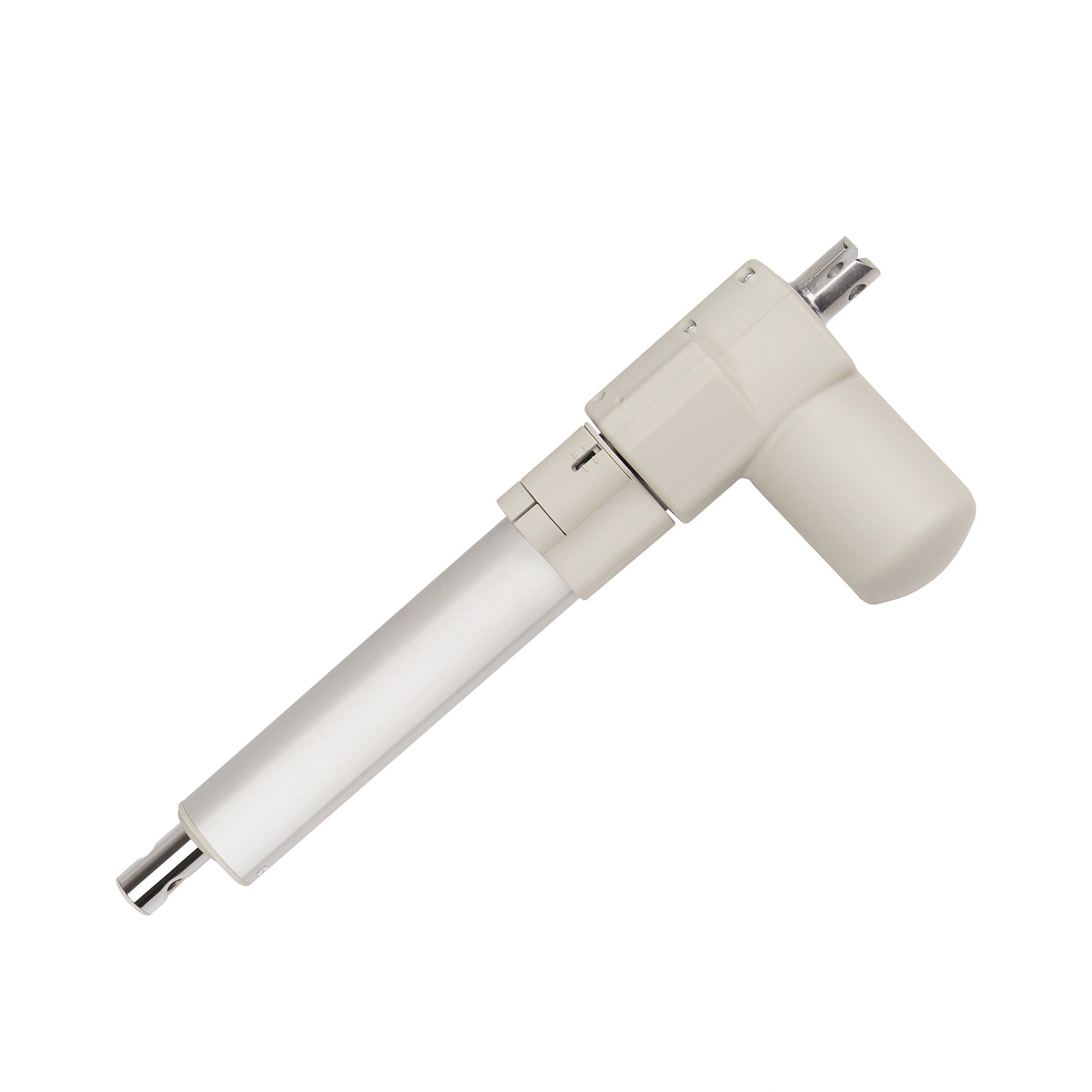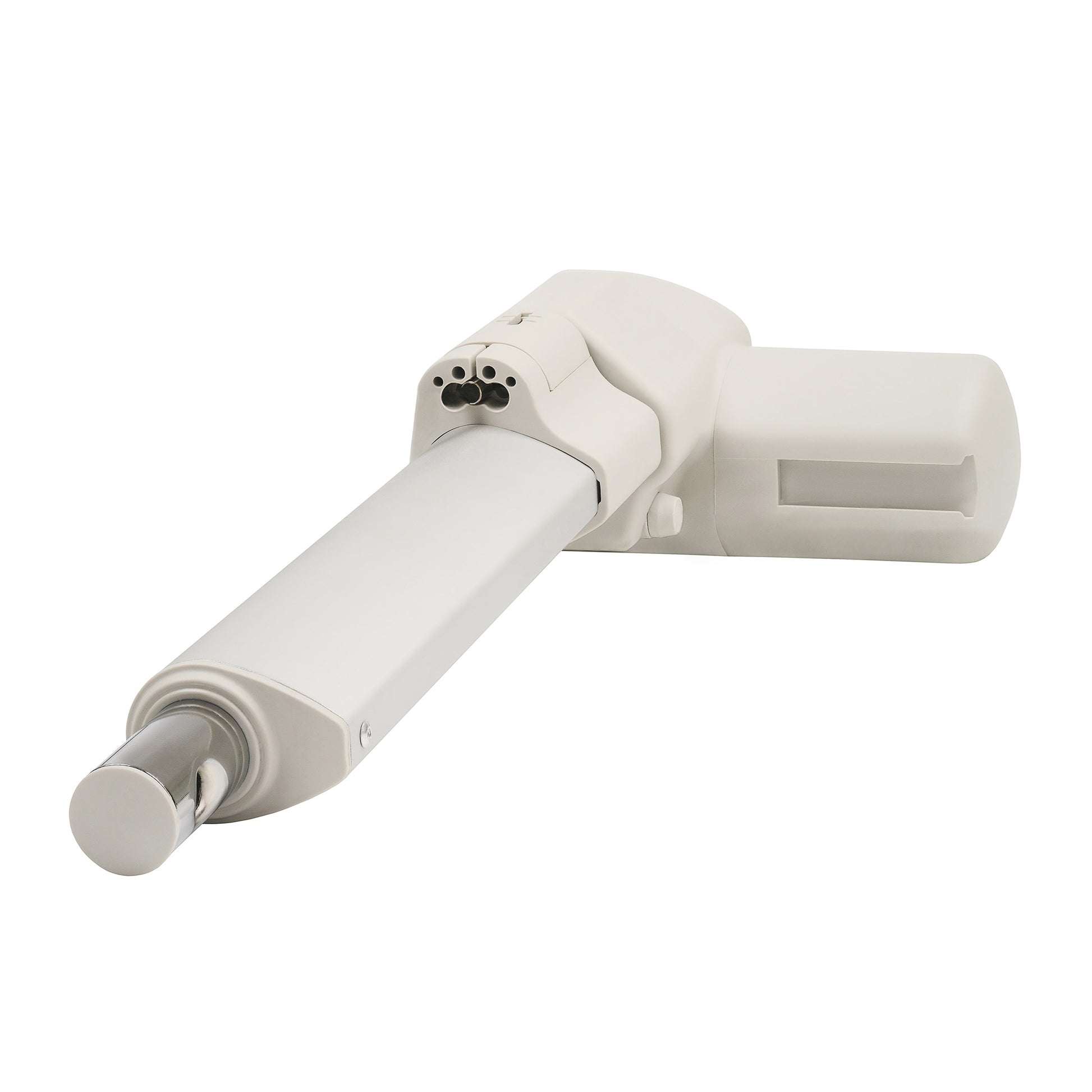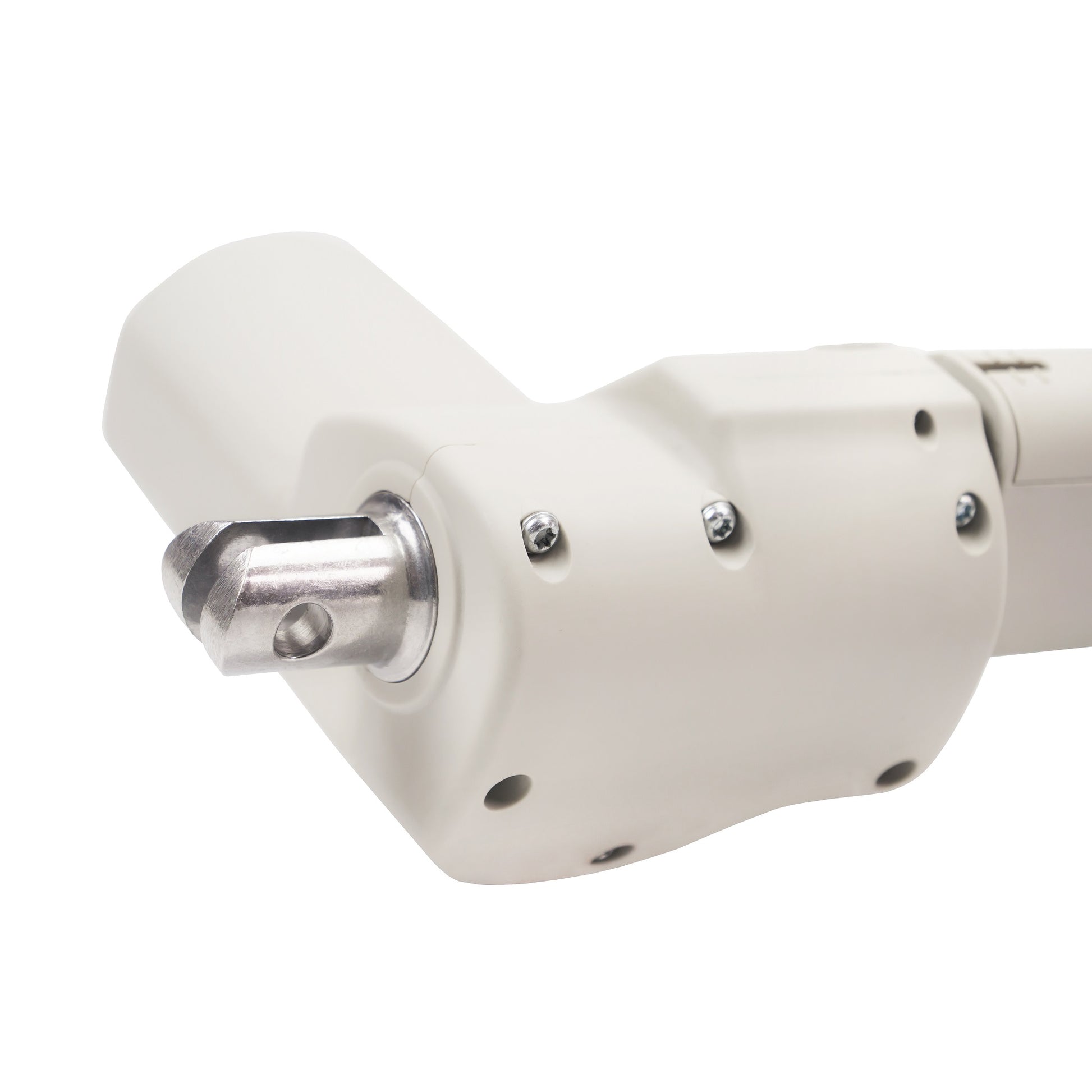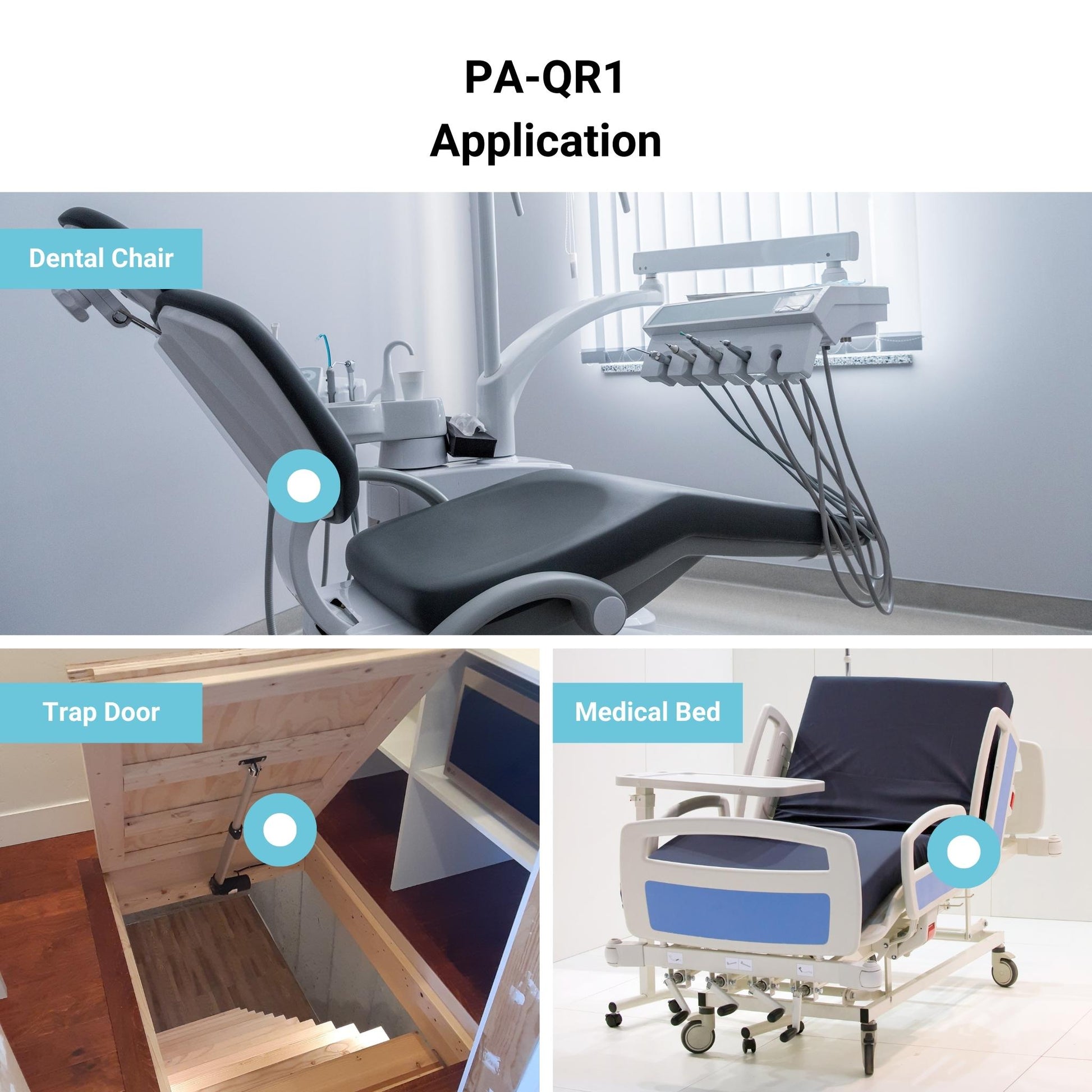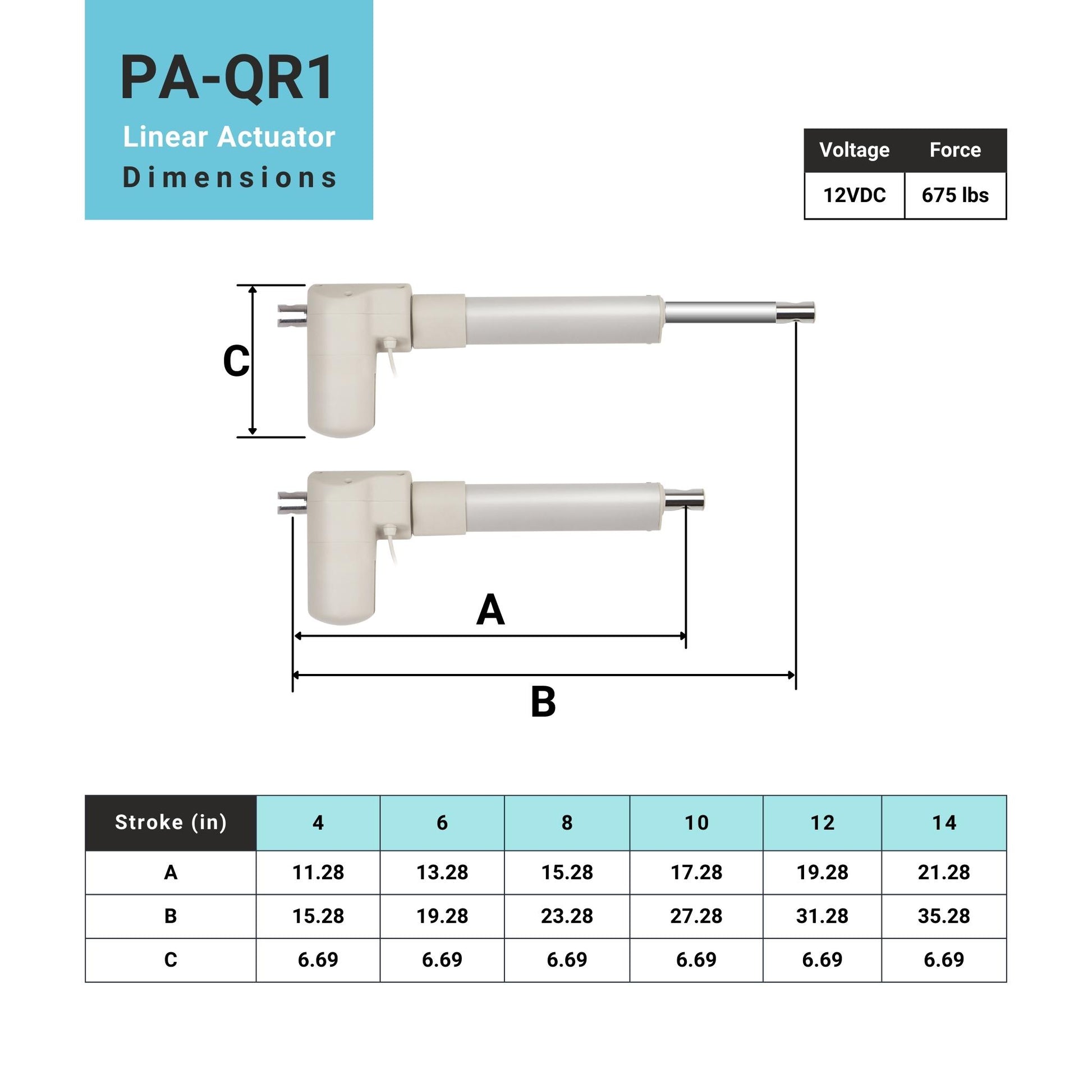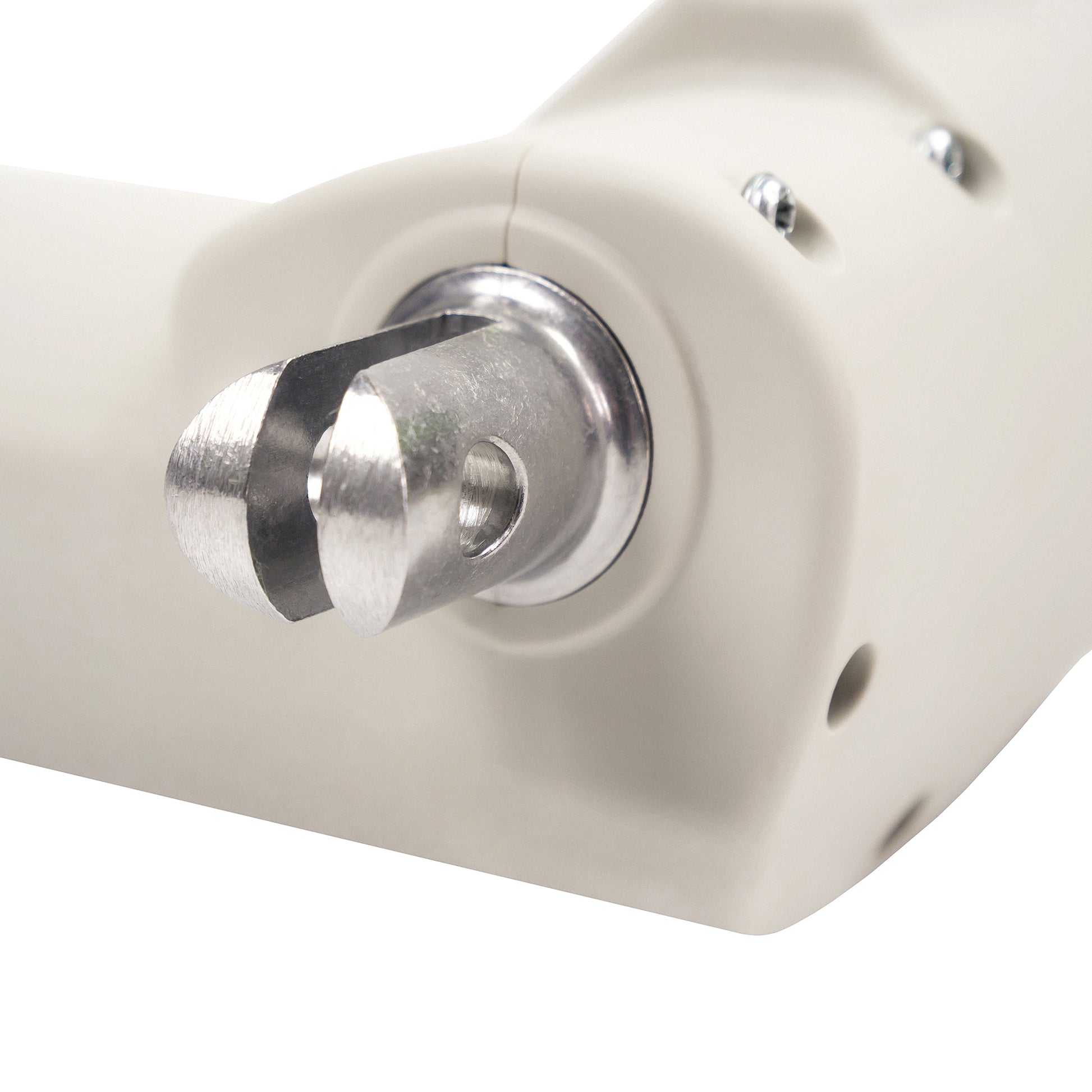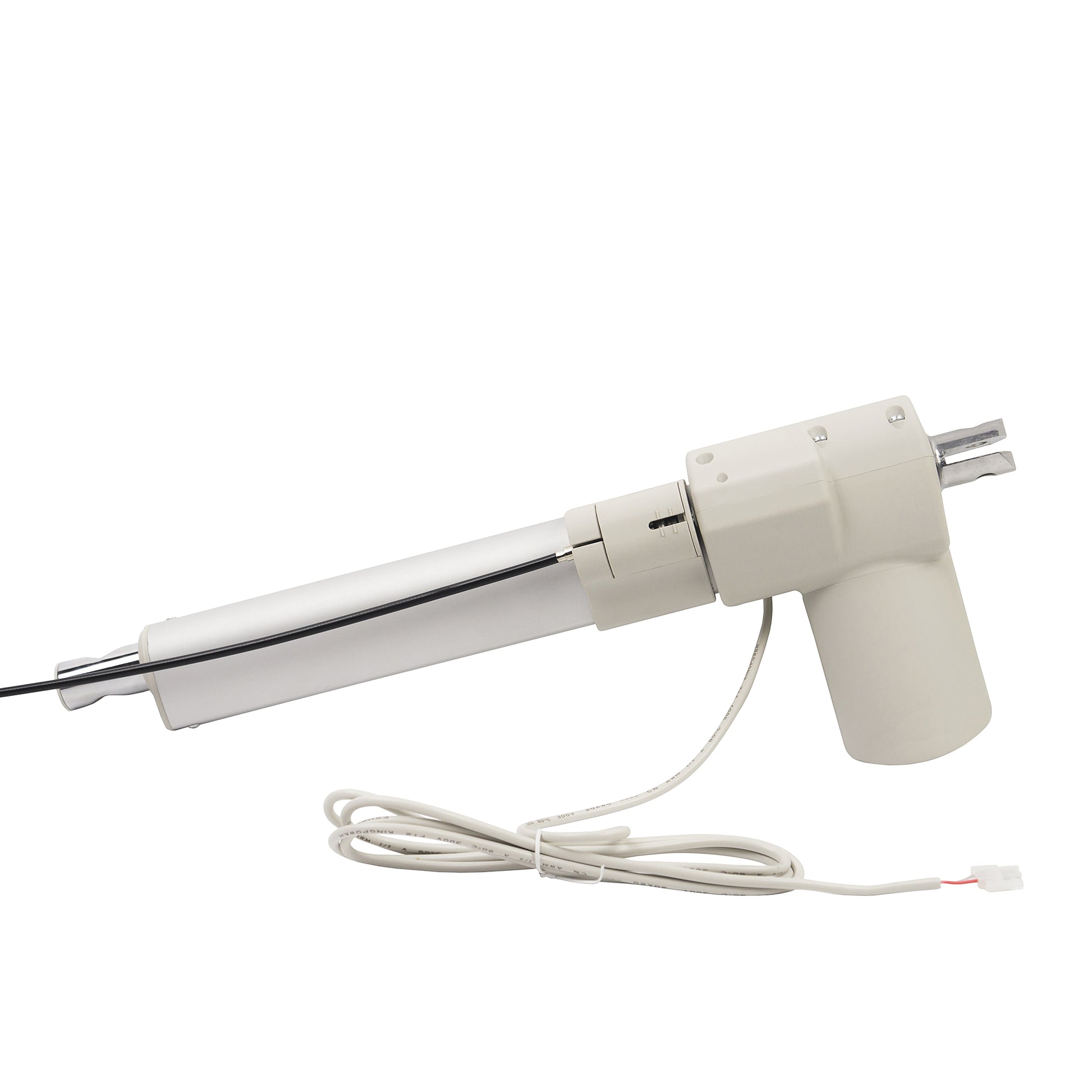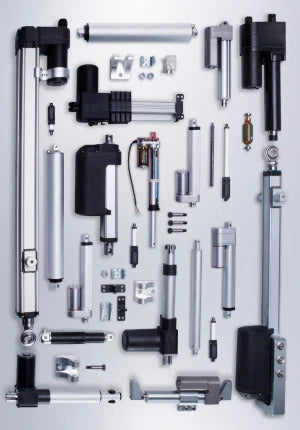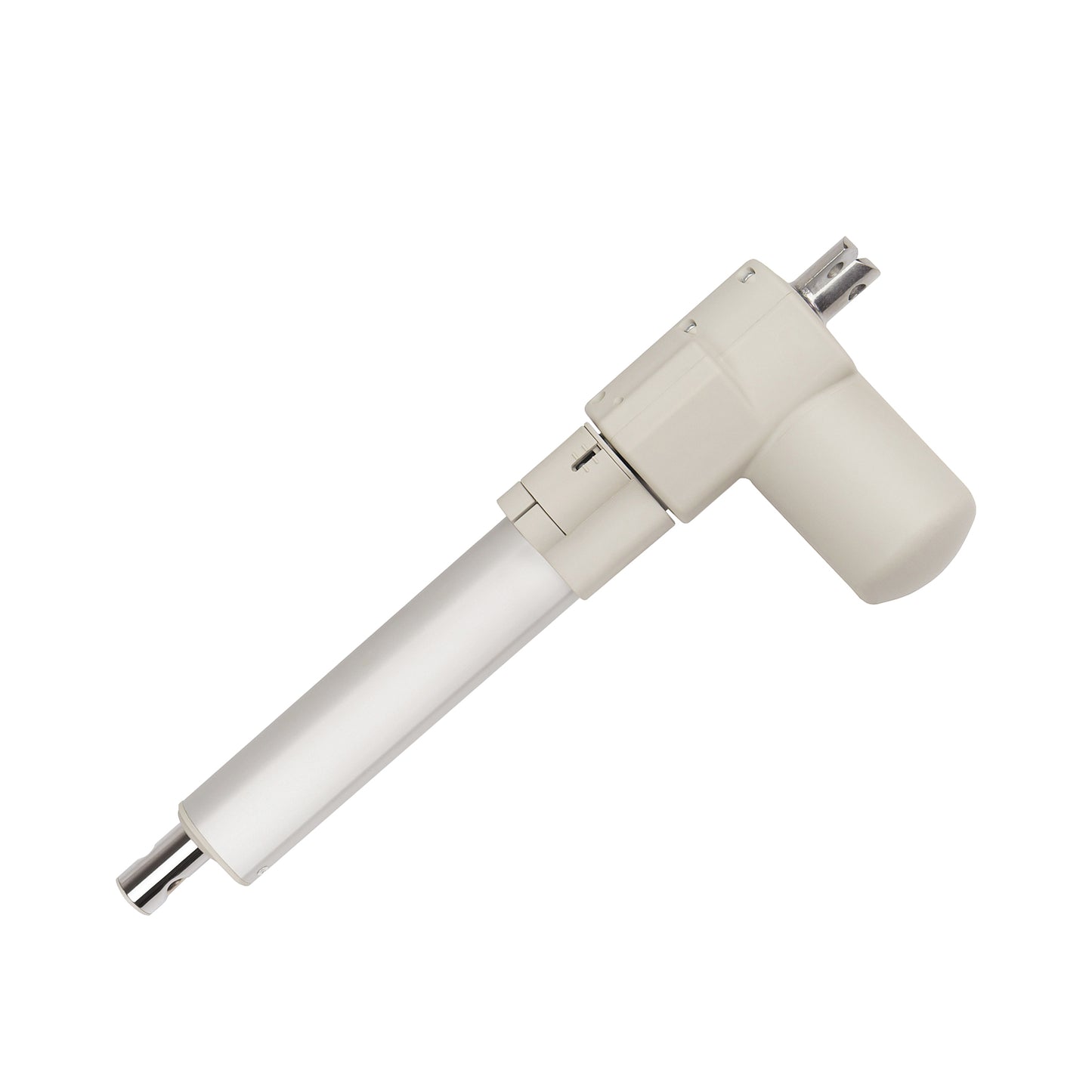
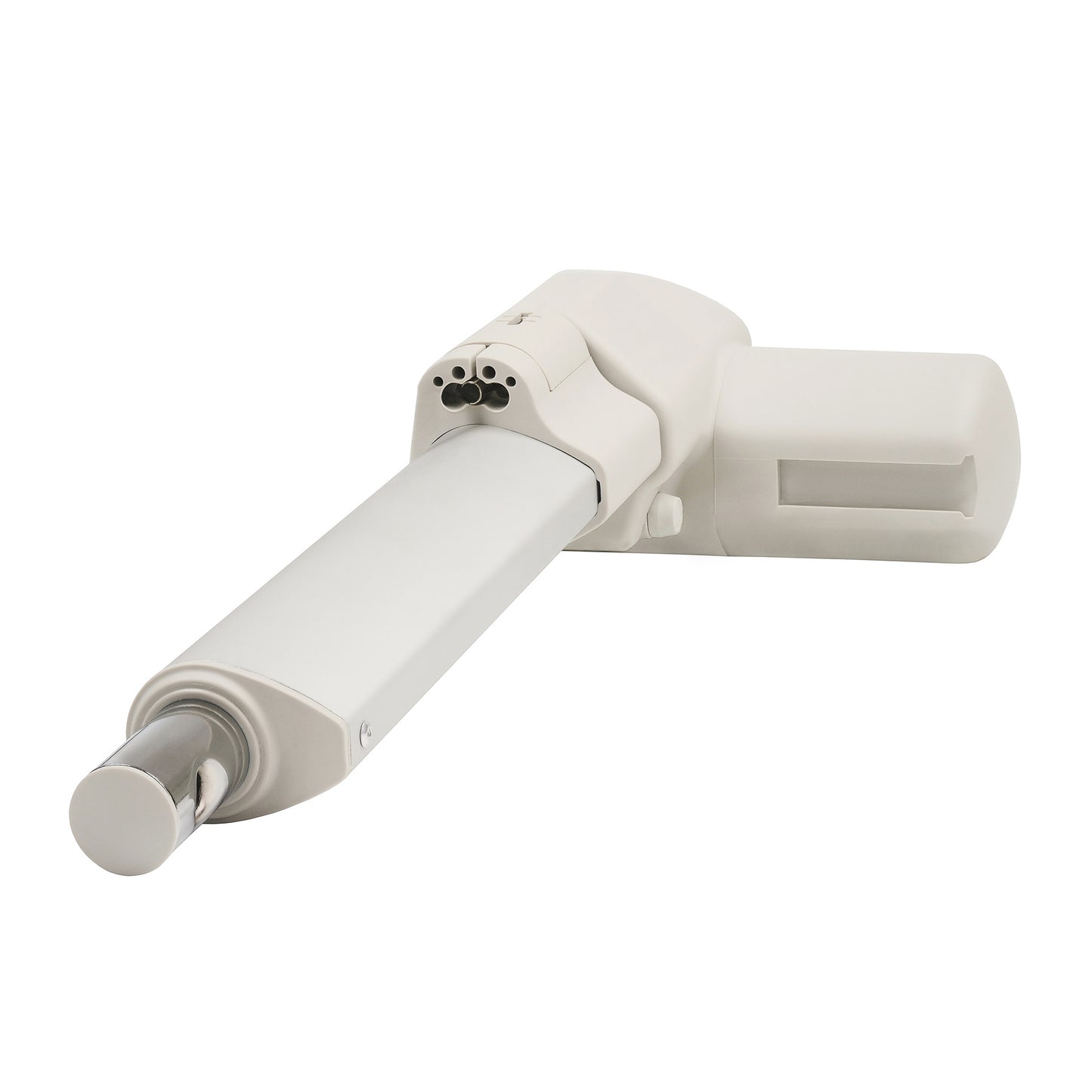
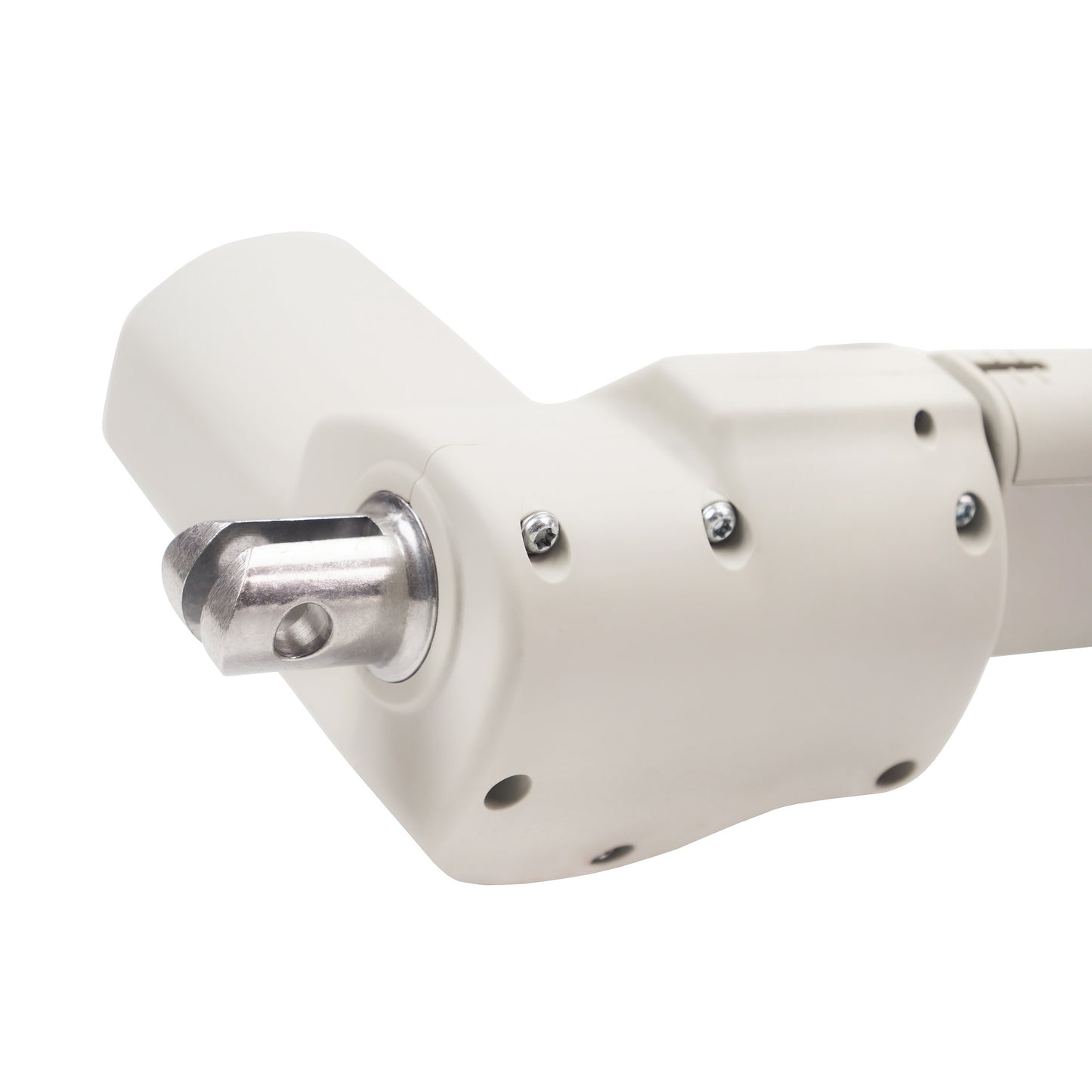
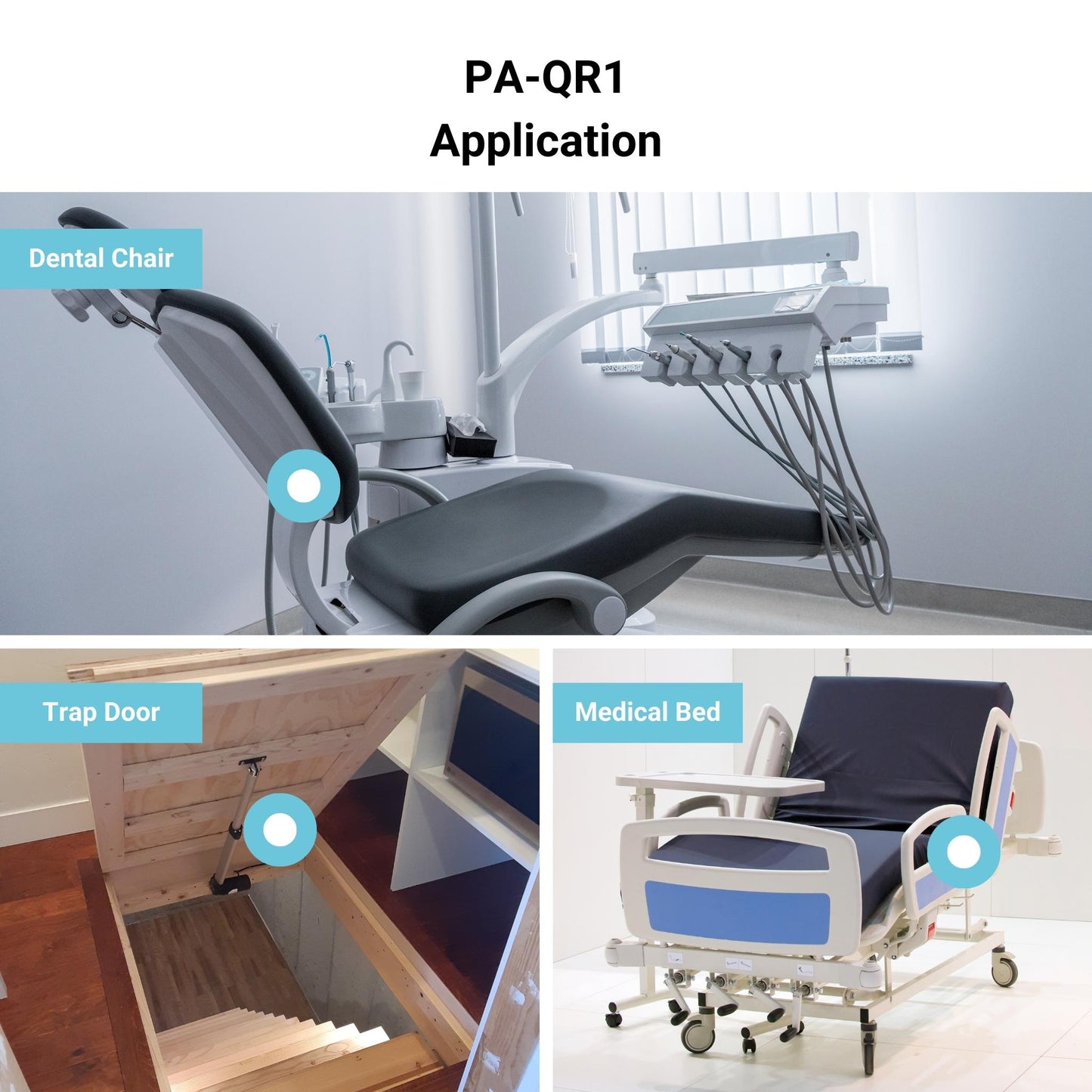
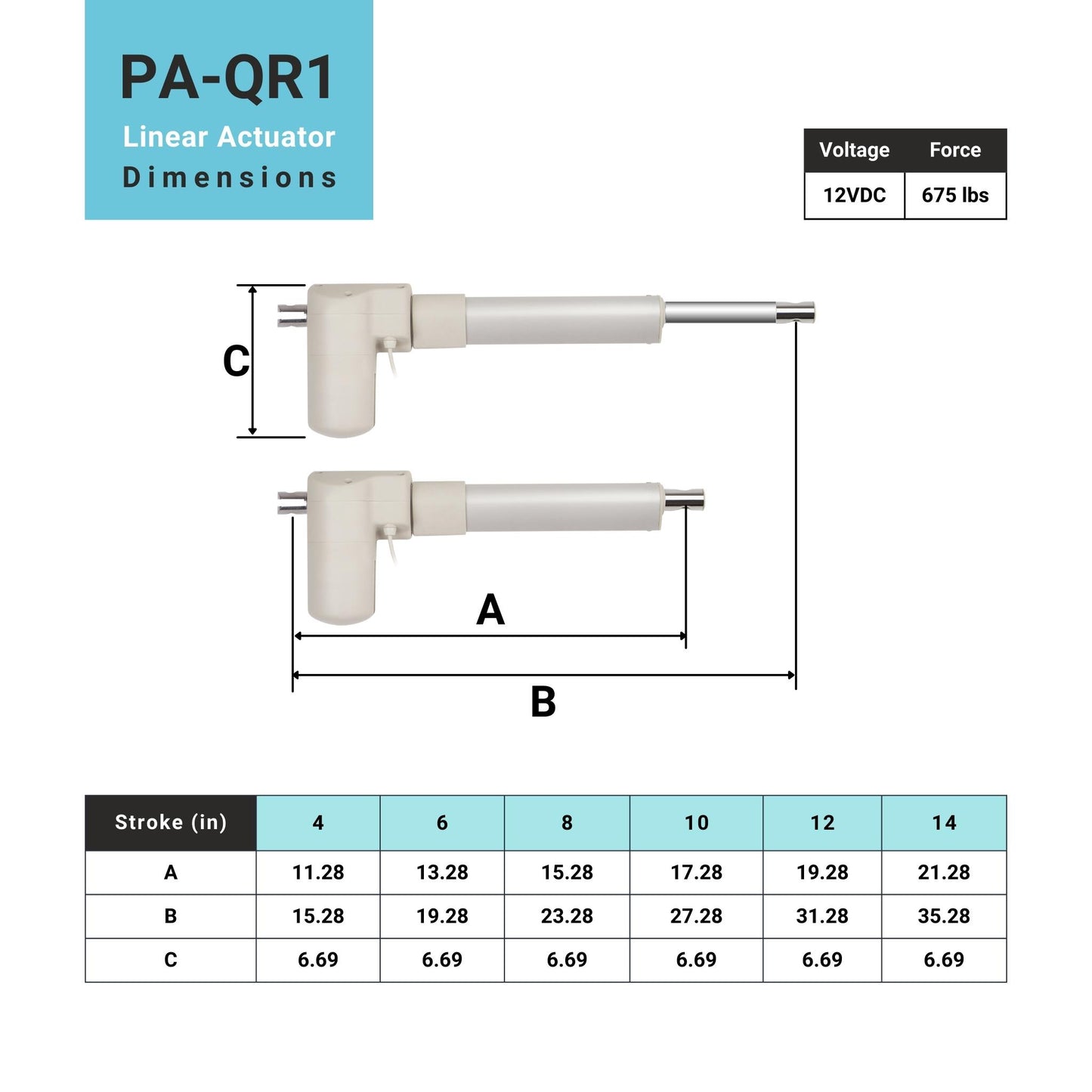
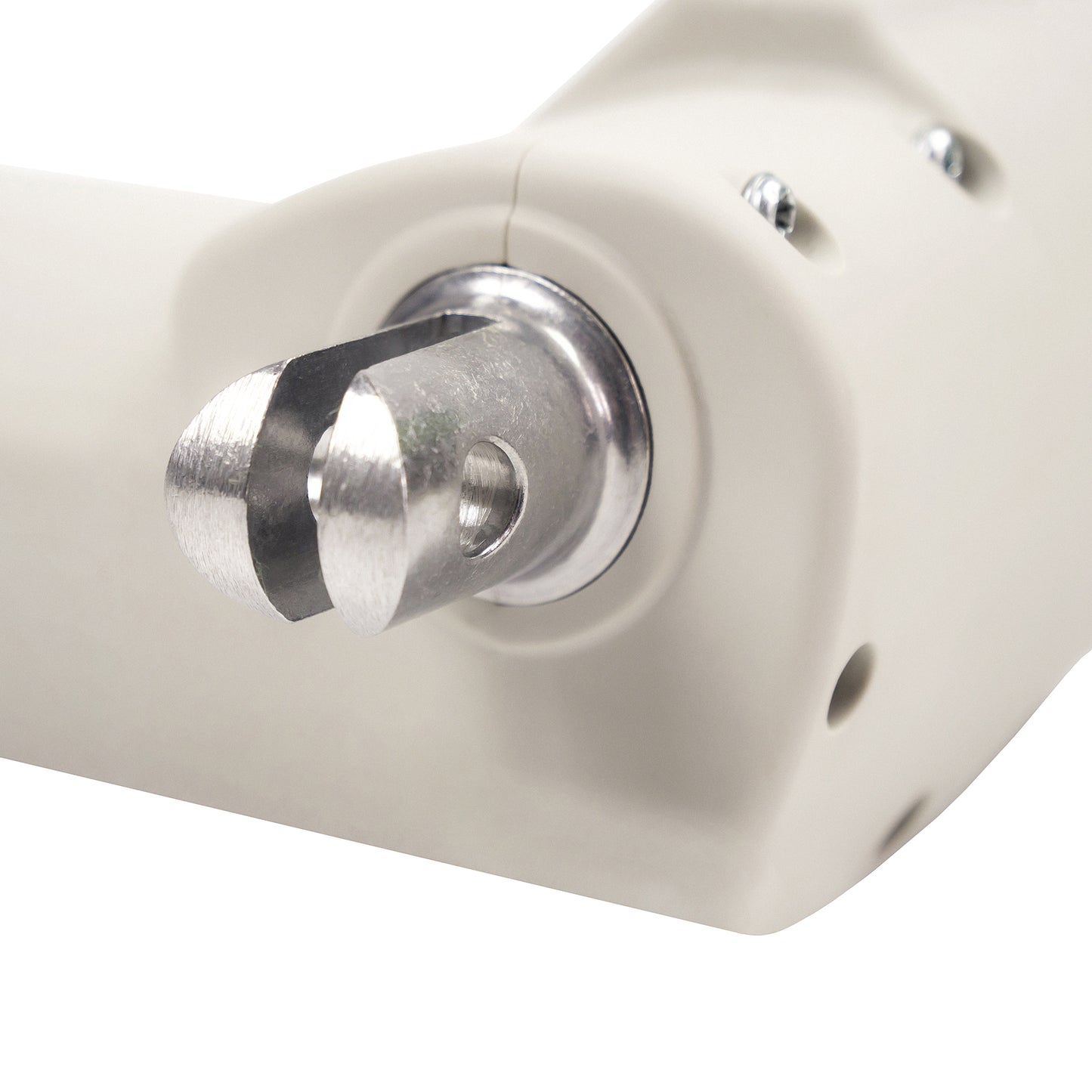
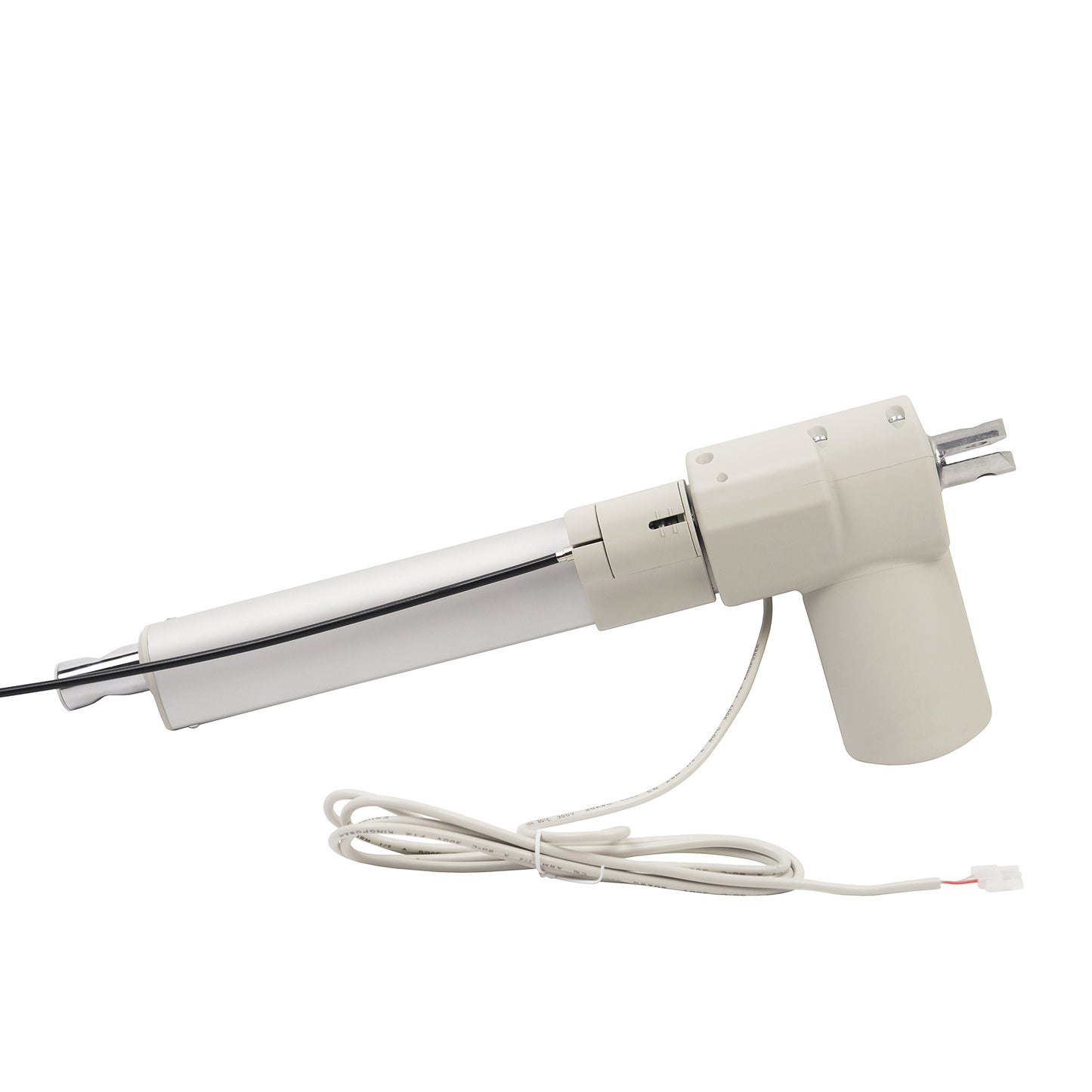
Le PA-QR1 est un actionneur à dégagement rapide, offrant une sécurité accrue et un mouvement rapide pour toute application. La fonction de sécurité du dégagement rapide est une composante essentielle, empêchant les situations où l'application peut rester bloquée dans une seule position. Cet actionneur utilise un mécanisme de dégagement de type câble qui, lorsqu'en fonction, permet de déplacer l'arbre manuellement, même lorsque l'unité n'est pas alimentée! Il permet également le dégagement rapide lorsque l'actionneur n'est pas accessible, en utilisant le levier et le câble de dégagement rapide AC-32 . Avec une capacité de poids de 675 lb et des longueurs de course de 4" à 14", cet actionneur est idéal pour de nombreux projets.
Comme ses autres spécifications, l'indice de protection IP66 de cet actionneur en fait une solution idéale pour les applications intérieures telles que les lits médicaux, les fauteuils dentaires et les lève-patients.
OPTIONS DE MONTAGE :
Cet actionneur est compatible avec le BRK-02 pour la course et la fixation à extrémité de moteur. Pour des informations et des spécifications plus détaillées, consultez la page produit de ce support.
SYSTÈMES DE CONTRÔLE:
Cet actionneur à dégagement rapide est compatible avec un large éventail de systèmes de commande dont nous disposons. Pour plus d'informations sur nos boîtiers de contrôle plug-n-play et nos microcontrôleurs, veuillez consulter notre page sur les systèmes de contrôle .
Tableau de comparaison des actionneursOptions sur mesure
Vous recherchez un actionneur mais les spécifications ne correspondent pas exactement à ce dont vous avez besoin ? Nous avons une longue liste de capacités pouvant être faites sur mesure pour vous assurer d'obtenir exactement ce dont vous avez besoin pour votre projet. Téléchargez la fiche technique de ce produit et découvrez vos options sur mesure !
Le PA-QR1 est un actionneur à dégagement rapide, offrant une sécurité accrue et un mouvement rapide pour toute application. La fonction de sécurité du dégagement rapide est une composante essentielle, empêchant les situations où l'application peut rester bloquée dans une seule position. Cet actionneur utilise un mécanisme de dégagement de type câble qui, lorsqu'en fonction, permet de déplacer l'arbre manuellement, même lorsque l'unité n'est pas alimentée! Il permet également le dégagement rapide lorsque l'actionneur n'est pas accessible, en utilisant le levier et le câble de dégagement rapide AC-32 . Avec une capacité de poids de 675 lb et des longueurs de course de 4" à 14", cet actionneur est idéal pour de nombreux projets.
Comme ses autres spécifications, l'indice de protection IP66 de cet actionneur en fait une solution idéale pour les applications intérieures telles que les lits médicaux, les fauteuils dentaires et les lève-patients.
OPTIONS DE MONTAGE :
Cet actionneur est compatible avec le BRK-02 pour la course et la fixation à extrémité de moteur. Pour des informations et des spécifications plus détaillées, consultez la page produit de ce support.
SYSTÈMES DE CONTRÔLE:
Cet actionneur à dégagement rapide est compatible avec un large éventail de systèmes de commande dont nous disposons. Pour plus d'informations sur nos boîtiers de contrôle plug-n-play et nos microcontrôleurs, veuillez consulter notre page sur les systèmes de contrôle .
Tableau de comparaison des actionneursOptions sur mesure
Vous recherchez un actionneur mais les spécifications ne correspondent pas exactement à ce dont vous avez besoin ? Nous avons une longue liste de capacités pouvant être faites sur mesure pour vous assurer d'obtenir exactement ce dont vous avez besoin pour votre projet. Téléchargez la fiche technique de ce produit et découvrez vos options sur mesure !
Le respect de normes est crucial pour notre entreprise afin de s'assurer que nos produits et services sont à un niveau de qualité qui garantie la satisfaction de la clientèle. Chez Progressive Automations, nous ne visons que le meilleur pour nos clients et nous nous continuons d'innover. Pour cette raison, nous sommes ravis d'annoncer que Progressive Automations est désormais certifié ISO 9001:2015 !
En savoir plus